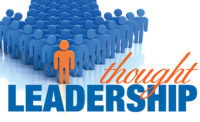Dow’s CEO sees safety’s connections throughout his company

An organization pursuing excellence must see safety’s role in the big picture. Done the right way, improvement in EHS performance cultivates improvement in other business functions -- because safety performance closely relates to organizational culture. Getting safety right means building the culture. And building the culture paves the way for getting safety right.
Not all approaches to safety improvement are equal. Building safety is a way to build culture. Leaders who understand this see its effects across the organization. They appreciate safety’s capacity to engage everyone at every level, and they intentionally lead with safety excellence to build a culture of excellence generally.
Safety is a fundamental human value. It brings stakeholders together to work toward a common goal. Aligning interests opens communication, improves systems, and invites innovation. That puts your organization in prime position to create and strengthen relationships within your teams, between team members and supervisors, and with the organization as a whole. You are engaging everyone. Building safety is a method for building performance capacity.
What culture contributes
The benefits of a stronger culture, achieved through safety excellence, show themselves across areas of functioning. You have more loyal employees, lower turnover, fewer absences, and greater engagement from workers.1 Research also shows that the resulting experience, dedication, and commitment have positive effects on many business functions and performance outcomes, from sales to product quality, productivity, financial performance, and shareholder value.2345
Dow Chemical has an expansive view of safety that includes the wellbeing of individual workers, the communities where they work, and the environment impacted by that work. Built into this view is the core notion of sustainability. Dow doesn’t talk about the bottom line, but rather the “triple bottom line”6 of people, environment, and profit. Dow’s corporate vision is “to be the most profitable and respected chemical company in the world.” If you question the order of those priorities, the U.K.-based company summarizes its goals as brief as a mantra: “Safety First, Pounds Second.”7 Dow leaders see safety’s connections throughout their organizations, and when those leaders look at the big picture, they see safety as the bedrock of their culture.
Safety as the cornerstone
When Dow CEO Andrew Liveris says, “The safety of our communities and our employees is of the utmost priority—no exceptions,”8 he is talking about ethics and values. He saw the full reach and impact of safety as the cornerstone of culture.
Under Liveris, Dow’s ambitious 2005 safety goals didn’t just reduce injuries. They also reduced time lost to investigation, and money lost to litigation and fines. They improved communication and generated efficiencies. As Dow and the William Davidson Institute observed in a 2013 paper on the inseparability of safety and business success, “Achieving the 2005 EHS goals enabled the company to deliver higher quality products at a lower cost.”9
Safety is connected to everything an institution does—every day and at every level. “While we talk a lot about metrics, that’s only the ‘how’ of improving EHS performance,” Liveris says about the safety initiatives at Dow. “The real driving force is ‘why’ we are doing this, which is to ensure everyone goes home safely to their families and loved ones.” Liveris is clear on his personal value for safety and he continues, “They deserve that, and so do the communities in which we operate. Everything else—like reputation and license to operate—is the added benefit of doing the right thing.”10
When Liveris talks about safety, he can’t help but contribute to culture. Leaders are always generating culture, constantly, whatever they do—whether they know it or not. Fortunately, Liveris is clear and consistent. He is committed to a universal good. His actions match his words and that makes him credible. That kind of credibility opens up communication and drives innovation. Under his leadership, Dow has made great strides in its EHS metrics and has created a culture that has bolstered performance overall. Costs have decreased; profits have increased. Liveris is poised to make new and even more ambitious EHS goals.
Everyone contributes to a culture of safety, but top leaders set the tone that drives progress. Liveris recognizes that safety at Dow has to be integrated throughout operations, and it has to start at the top. For safety to have its maximum benefit, it has to be fundamental to the culture. At its best, safety is a model for engagement and commitment that has ramifications across business functions. Done well, safety will build and refine the tools and habits of excellence, which can be broadly applied.
1 Eisenberger, R. & Stinglhamber, F. (2011). Perceived Organizational Support: Fostering Enthusiastic and Productive Employees. Washington, D.C.: American Psychological Association.
2 Boyce, A.M., Nieminen, L.R.G., Gillespie, M.R., Ryan, A.M., & Denison, D.R. (2015). Which comes first, organizational culture or performance? A longitudinal study of causal priority with automobile dealerships. Journal of Organizational Behavior, 36: 339-359.
3 Neves, P., & Eisenberger, R. (2012). Management Communication and Employee Performance: The Contribution of Perceived Organizational Support. Human Performance, 25(5), 452-464. doi:10.1080/08959285.2012.721834
4 Mearns, K. J., & Reader, T. T. (2008). Organizational Support and Safety Outcomes. Safety Science, 46(3), 388-397.
5 Naidoo, L., Scherbaum, C., Goldstein, H. & Graen, G. (2011). A Longitudinal Examination of the Effects of LMX, Ability, and Differentiation on Team Performance. Journal of Business & Psychology, 26(3), 347-357.
6 PR Newswire. (1999, September 28). Dow Releases First ‘Triple Bottom Line’ Report. Retrieved Feb. 28, 2016, from http://www.prnewswire.com/news-releases/dow-releases-first-triple-bottom-line-report-74551712.html
7 Campbell Institute. (2012). Defining world class EHS: An analysis of leading EHS management system practices of Robert W. Campbell Award winners. Retrieved Feb. 28, 2016, from http://www.nsc.org/CambpellInstituteandAwardDocuments/WP-DefiningWorldClass-EHS.pdf
8 Safety+Health. (2012, February 1). 2012 Green Cross for Safety Medal Winner. Retrieved Feb. 28, 2016, from http://www.safetyandhealthmagazine.com/articles/print/2012-green-cross-for-safety-medal-winner-2
9 Dow Chemical and William Davidson Institute at the University of Michigan. (2013, January 31). Dow Chemical Company: The Inseparability of Safety and Business Success. Retrieved Feb. 28, 2016, from http://www.thecampbellinstitute.org/campbell-award/file/download.php?id=20130619ce04850ad10e95f9a0c68c8765c2cb76
10 Ibid.
Looking for a reprint of this article?
From high-res PDFs to custom plaques, order your copy today!






.jpg?t=1721257160)

